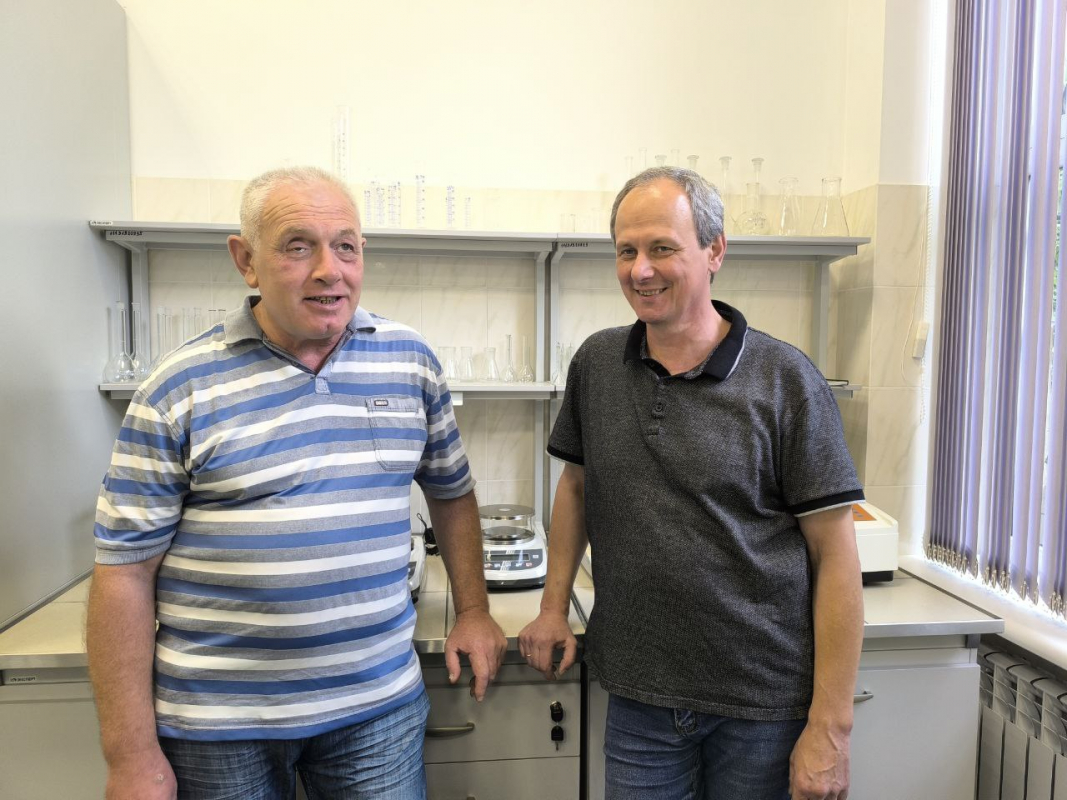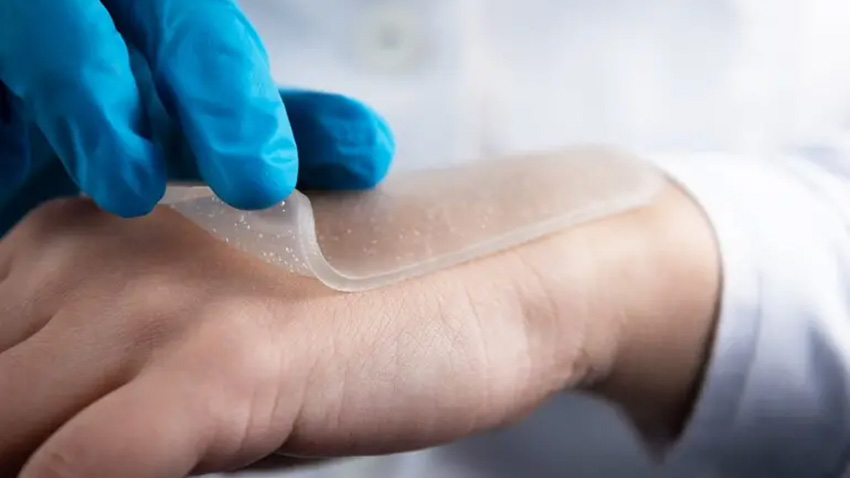Abdominal injuries are considered to be one of the most difficult, as to save the life of a wounded soldier, you need to act as quickly as possible: stop the bleeding and prevent wound infection. The lack of necessary medicines in a military first aid kit on the battlefield or in a stabilization point can cost a wounded man his life. However, Ukrainian researchers from Lviv Polytechnic National University have developed a unique technology that helps solve this problem. A whole first aid kit can be replaced by a single hydrogel dressing.
If you smear a non-woven fabric tape with a jelly-like substance and then dry it, you get a reinforced hydrogel dressing that can be applied to open wounds. This technology, developed by Lviv Polytechnic researchers on the basis of natural polymers, is already saving the lives of our defenders.
Dzerkalo Tyzhnia interviewed Volodymyr Samaryk, one of the developers, project manager and Professor at the Department of Organic Chemistry, the Institute of Chemistry and Chemical Technologies, Lviv Polytechnic National University. The scientist told about the peculiarities of hydrogel technologies and how they are used.
– In general, a gel is a colloidal solution. Our composite is made on the basis of sodium alginate, says Volodymyr. It is used in the food industry as a thickener and stabiliser E401. It is a natural polysaccharide extracted from algae. Please don’t confuse it with agar: there are hydrogels of the first and second types. Everyone’s favourite jelly and agar-agar gel for jelly beans are gels of the second kind, while sodium alginate is of the first kind. You can melt the second type of gel (like jelly if you heat it), while the first type of gel has a polymer mesh that is firmly cross-linked and will not melt when heated slightly.
– How do your hydrogel dressings differ from similar products?
– We created our own hydrogel for moist treatment of wounds based on a natural polymer. This was the result of our research... The existing hydrogel dressings are made on the basis of synthetic polymer, mainly polyurethane.
– Why are the dressings, you have developed, aimed at moist wound healing. Are they an alternative to traditional wound dressings?
– An ordinary gauze bandage is, of course, good. It has been saving people’s lives for centuries. But it grows into the wound and bandaging becomes torture. Our hydrogel bandages do not stick and do not grow in.
– When can we expect them to be delivered?
– We are already delivering them. Back in 2014, based on our development, we launched a pilot production of hydrogel reinforced dressings at the production facilities of Ukrtekhmed in Kyiv. Now they are sold under the brand name Arma-gel. After that, we had a number of different developments that have not been commercialised yet, but have significantly enriched our experience in the field of polymeric medical materials. In 2021–2022, we developed the Aquior medical dressings. In 2022, based on previous research, we created a haemostatic agent to stop critical bleeding. This product is currently undergoing a massive trial. It is expected that by the end of the year, we will be able to produce a large number of pilot batches.
We have also developed reinforced hydrogel sheets 100х40 centimetres. They can be used to rotate the victim’s body. We plan to increase the area of the sheets to 100x70 centimetres.
– As far as I understand, «reinforce» means that the hydrogel is applied to any base...
– Our hydrogel is half water. A wipe 30x30 centimetres and three millimetres thick can still hold without reinforcement. Wider and longer dressings and sheets need reinforcement to increase their physical and mechanical properties.
– What is the concept of injecting a hydrogel in the form of foam into the abdominal cavity of a wounded person?
– If a combat medic injects a hydrogel composition into the abdominal cavity of an injured soldier through a wound opening, it will turn into a spongy mass, a macroporous gel, within a short time – no more than a minute. This mass will block the damaged organs. The antibiotics and/or antiseptics released from the gel will eliminate the threat of sepsis, and the release of haemostatic agents will stop the bleeding or, in the worst case, significantly slow it down. In this way, the therapeutic window will be extended, and the chances of survival and surgical care will be significantly increased.
– What are your future plans?
– We are constantly expanding our product range and producing pain relieving, antiseptic, anti-inflammatory hydrogel dressings, bandages and wipes. These are unique items that no one else produces but us. For example, a hydrogel sheet (100x 40 centimetres) for emergency treatment of large burn injuries, masks for emergency treatment of facial burn injuries. One student is actively developing a hydrogel dressing with aloe extract. I have already put it into preclinical trials along with an analgesic and anti-inflammatory dressing.
The full text of the article is available on the Dzerkalo Tyzhnia website.


